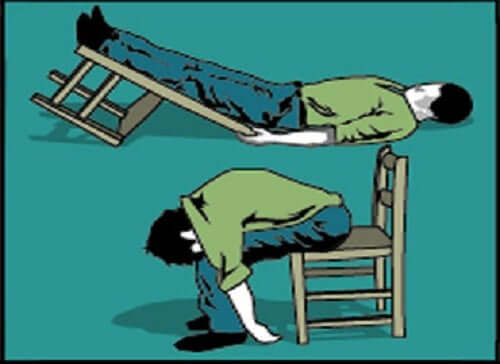Vasovagal Syncope: Symptoms, Causes, and Treatment

Vasovagal syncope is a short-lived malaise which appears as a loss of consciousness for a brief period. The majority of adults have experienced it, or at least the symptoms leading up to it, known as presyncope.
The majority of vasovagal syncope symptoms are benign. It’s only related to a serious condition in a small percentage of people, and an estimated 3% of people who experience it seek medical attention. However, only 1% are hospitalized.
Following vasovagal syncope, there’s usually no damage besides possible injuries from falling. However, some people experience these episodes repeatedly, with no medical explanation. In these cases, their quality of life is affected considerably.
What is vasovagal syncope?

The common term for vasovagal syncope is fainting. It consists of a sudden loss of consciousness which lasts briefly. This involves losing the ability to stand and loss of posture. Recovery is usually spontaneous.
Vasovagal syncope occurs when some factor triggers the vagus nerve. The parasympathetic nervous system causes a decrease in heart rate and causes the blood vessels to dilate. Under these conditions, less blood reaches the brain, and syncope, or fainting, is the result.
Syncope is classified according to duration. From this perspective, there are three types:
- Firstly, light or presyncope, when the individual does not lose consciousness in the strict sense. Extreme dizziness is experienced.
- Moderate, which entails passing out for a few seconds.
- And, finally, severe, lasting between 10 and 15 seconds, and can lead to seizure.
Symptoms
Vasovagal syncope makes up 75% of syncope cases. It occurs in healthy individuals in the majority of cases. Patients almost always have normal blood pressure, although a small number present with a condition known as orthostatic hypotension.
Some of the symptoms that usually precede this type of syncope are:
- Yawning
- Weakness
- Feeling hot
- Anxiety or hyperventilation
- Dizziness
- Vertigo
- Paleness
- Palpitations
- Diminished visual field
- Buzzing in ears, or sensation that ears are plugged
- Difficulty breathing and feeling faint
These preceding symptoms don’t always occur. Sometimes the loss of consciousness is sudden. When the individual loses consciousness, they’re usually extremely pale and sweaty with clammy skin and dilated pupils. After a period of mental confusion and disorientation, the person gradually regains consciousness. In some cases, there’s fecal or urinary incontinence involved with the loss of consciousness.
You might like: Discover Six Effects of Heat on the Body
Causes

Some of the factors which cause this to occur are:
- Standing for a long period of time
- Long exposure to a heat source
- Having blood drawn, or seeing blood
- Overexertion
- Hunger
- Lack of oxygen
- Change in altitude
- Strong odors
Rapid changes in position are often linked to syncope, as well as emotional distress. Additionally, alcohol can be a triggering factor, as well as lack of salt in the diet, or an allergic reaction to certain medications.
Also read: Heat Stress: What You Need to Know
Available treatments
When vasovagal syncope occurs as an isolated event, no further treatment is usually given beyond the immediate regaining of consciousness. It’s best to lie down with your feet elevated, to get blood flowing normally again.
If you experience recurring episodes of syncope, it’s best to consult with a doctor. They’ll probably order a stress test and/or a tilt table test. Beyond that, they may recommend medication or suggest lifestyle changes to prevent future episodes.
For example, in some cases it may be necessary to use compression socks. This helps reduce the accumulation of blood in the legs.
All cited sources were thoroughly reviewed by our team to ensure their quality, reliability, currency, and validity. The bibliography of this article was considered reliable and of academic or scientific accuracy.
- Moya-i-Mitjans, Á., Rivas-Gándara, N., Sarrias-Mercè, A., Pérez-Rodón, J., & Roca-Luque, I. (2012). Síncope. Revista Española de Cardiología, 65(8), 755-765.
- Kay, M., Choe, E. K., Shepherd, J., Greenstein, B., Watson, N., Consolvo, S., & Kientz, J. A. (2017). Síncope vasovagal – Síntomas y causas – Mayo Clinic. Mayo Clinic.
- Vilas, L. A., Mompó, G. L., Sotolongo, P. C., Carrillo, P. C., Carrillo, C. C., & Gutiérrez, E. G. (2002). Síncope vasovagal como fenómeno médico frecuente. Revista Cubana de Medicina Militar.
This text is provided for informational purposes only and does not replace consultation with a professional. If in doubt, consult your specialist.








